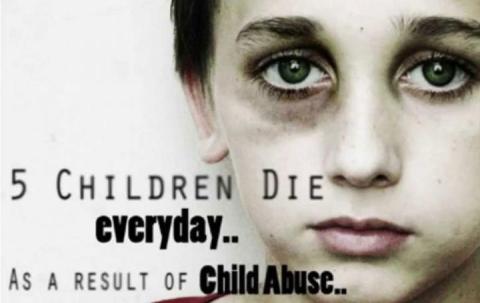
It is estimated that as many as one in every four children, undergo some form of child abuse by the time they are eighteen years old. “In Kenya, a third of the girls and a quarter of the boys go through abuse by the time they join high school. In our hospital every month twenty children, both boys and girls, present with child abuse which is mostly sexual abuse,” says Dr. Phyllis Muhonja, a forensic Medical Officer based in Embu Level V hospital, Kenya.
Child abuse is any form of hurt done to a child whether intentional or unintentional and can occur in many ways including physical, emotional, neglect, sexual and child trafficking. Neglect involves denying the child their basic needs such as food, shelter and clothing.
Dangers of child abuse
Child abuse is dangerous to children since it claims their self esteem. “In some cases, they refuse to attend classes leading to poor educational quality,” she says.
Children also develop psychological and mental disorders in future leading to withdrawal, drug addiction, and participation in crime. “Many people attending mental support groups or rehabilitation for drug addiction can trace their disorders to child abuse.”
Sexual abuse and social cultural changes have led to increase in childhood pregnancies and rise in HIV /Aids and sexually transmitted infections among teenagers.
Causes of child abuse
Some children are more likely to be abused than others. “Children who belong to vulnerable groups such as orphans and the disabled are at a higher risk of abuse,” she says. Many children also undergo abuse during times of huge economic and social change or disasters such as elections, civil strife, wars and people moving into refugee camps.
Abuse also occurs in social cultural setups such as family and can take many forms such as battering, grooming, incest, genital mutilation and bullying. Some children undergo corporal punishment in schools as a form disciplining. Disciplining needs to be acceptable such as verbal and non physical punishment such washing, denying them phones, but not the form that leads to bruising, fractures and head injuries.
Many perpetrators are likely to have a history of undergoing child abuse themselves yet some guardians use children for monetary gain. “Lack of good laws to protect children and their (children) lack of knowledge that they are being abused worsens the problem,” she says.
Some guardians fail to offer leadership leading to them participating in child abuse. This poses a challenge to addressing the problem.
The legal framework has been faulted as a contributor to the problem since it takes a lot of time to arrive to a just conclusion hence interfering with process of justice and child rehabilitation.
Lack of funding and personnel interferes with the processes of rescue and rehabilitation.
Management
The first step in management is to recognize a child who is being abused. One needs to look for signs of abuse such as withdrawal, poor school performance, drug use, change in social behavior, facial marks, change of friends or having friends whom they don’t want to disclose, or preferring company of some older persons, and going away from home.
When one suspects of child abuse, the next thing is to report to social authority where they undergo assessment. If they have injuries they are taken to hospital for further treatment, forensic sampling, data collection and documentation.
If not badly off, they undergo rescue where the child protection agency is contacted from where the state agencies are contacted for further action such as reporting to a police station, prosecutor, legal officer, or courts.
Thereafter, depending on form of abuse, one can undergo various processes to seek justice and post abuse care and rehabilitation.
Prevention
Child abuse can be prevented if there are good legal reform networks. “In Kenya, customary law interferes with prevention since many people still want to solve the problems without involving the state legal mechanisms.”
Education, creating awareness, use of child helplines are some ways that help to address the problem. “Nowadays there are professionals getting into the field which is very advisable.”
“The hallmark of child abuse prevention is timely reporting,” she says.